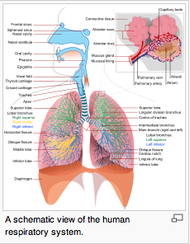- Home
- About Us
- TSPT Academy
- Online Courses
-
Resources
- Newsletter
- Business Minded Sports Physio Podcast
- Day in the Life of a Sports PT
- Residency Corner
-
Special Tests
>
-
Cervical Spine
>
- Alar Ligament Test
- Bakody's Sign
- Cervical Distraction Test
- Cervical Rotation Lateral Flexion Test
- Craniocervical Flexion Test (CCFT)
- Deep Neck Flexor Endurance Test
- Posterior-Anterior Segmental Mobility
- Segmental Mobility
- Sharp-Purser Test
- Spurling's Maneuver
- Transverse Ligament Test
- ULNT - Median
- ULNT - Radial
- ULNT - Ulnar
- Vertebral Artery Test
- Thoracic Spine >
-
Lumbar Spine/Sacroiliac Joint
>
- Active Sit-Up Test
- Alternate Gillet Test
- Crossed Straight Leg Raise Test
- Extensor Endurance Test
- FABER Test
- Fortin's Sign
- Gaenslen Test
- Gillet Test
- Gower's Sign
- Lumbar Quadrant Test
- POSH Test
- Posteroanterior Mobility
- Prone Knee Bend Test
- Prone Instability Test
- Resisted Abduction Test
- Sacral Clearing Test
- Seated Forward Flexion Test
- SIJ Compression/Distraction Test
- Slump Test
- Sphinx Test
- Spine Rotators & Multifidus Test
- Squish Test
- Standing Forward Flexion Test
- Straight Leg Raise Test
- Supine to Long Sit Test
-
Shoulder
>
- Active Compression Test
- Anterior Apprehension
- Biceps Load Test II
- Drop Arm Sign
- External Rotation Lag Sign
- Hawkins-Kennedy Impingement Sign
- Horizontal Adduction Test
- Internal Rotation Lag Sign
- Jobe Test
- Ludington's Test
- Neer Test
- Painful Arc Sign
- Pronated Load Test
- Resisted Supination External Rotation Test
- Speed's Test
- Posterior Apprehension
- Sulcus Sign
- Thoracic Outlet Tests >
- Yergason's Test
- Elbow >
- Wrist/Hand >
- Hip >
- Knee >
- Foot/Ankle >
-
Cervical Spine
>
- I want Financial Freedom
- I want Professional Growth
- I want Clinical Mastery
 The average adult breathes 12-20x/minute, which accounts to over 20,000 breaths/day. Ideally, the diaphragm is the major muscle of inspiration. When abnormal breathing patterns develop, accessory muscles (scalenes, SCM, upper trapezius, pectorals) are forced to be used more. In other words, these muscles have the potential to be used improperly >20,000x/day. Scary right?! While various breathing pattern abnormalities exist, a commonly seen pattern is the "chest breather." The chest breather does not fully engage his/her diaphragm and often has decreased lung volumes. These patients often incorporates their anterior accessory muscles of inspiration which can pull them into a forward head and rounded shoulder posturing: a posture we see in many of our clients. Their imbalances go deeper than what is seen by observation alone. Because the chest breather has decreased lung volumes, he/she may be in a constant sympathetic state to supply sufficient oxygen to the bodies tissues. Consequently, they may have increased muscle tone, anxiety, and a variety of other PNS and CNS symptoms. In a post written by Mike Reinold in late April, he highlights two studies that show the importance of proper breathing. One study interestingly discovered increased EMG activity of the scalene and trapezius muscles while typing. As students, who spend most of their day at a computer, this is something to consider. This could be contributing to neck pain and stiffness that so many students have. Additionally, breathing exercises maybe a good place to start for your sedentary office worker with chronic neck pain. Reinold also mentions several treatment strategies to initially assess breathing technique: 1. Breath Holding Test. Decreased breath holding my demonstrate an intolerance to CO2 build-up. 2. Belly/Chest Test. Have the patient place one hand at their naval and their second hand at the sternum. Assess which hands moves further. Is there a change is sitting vs. supine? With a deep breath, ~90% of motion should come from the lower hand, indicating good diaphragmatic breathing. This test can later be used as an intervention. It is a simple way to provide external cueing to the patient to activate their diaphragm. 3. Seated Lateral Expansion. Have the patient place a hand on either side of their thorax. Take a deep breath in and feel for rib movement symmetry. Again, if one side is moving differently than the other, hand cueing + manual facilitation can act as a good treatment intervention early in the POC. Below is a basic video demonstrating diaphragmatic breathing: Here are 2 other good resources we found off Dr. E's website (The Manual Therapist) on breathing:
1. 5 Techniques to try with Diaphragmatic breathing 2. Assessment and Treatment for Diaphragmatic Breathing by: SPT Fred Charles Thanks Mike Reinold and Dr. E for the great posts!
0 Comments
Leave a Reply. |
Dr. Brian Schwabe's NEW Book in partner with PaleoHacks!
Learn residency-level content on our
Insider Access pages We value quality PT education & CEU's. Click the MedBridge logo below for TSPT savings!Archives
July 2019
Categories
All
|






 RSS Feed
RSS Feed